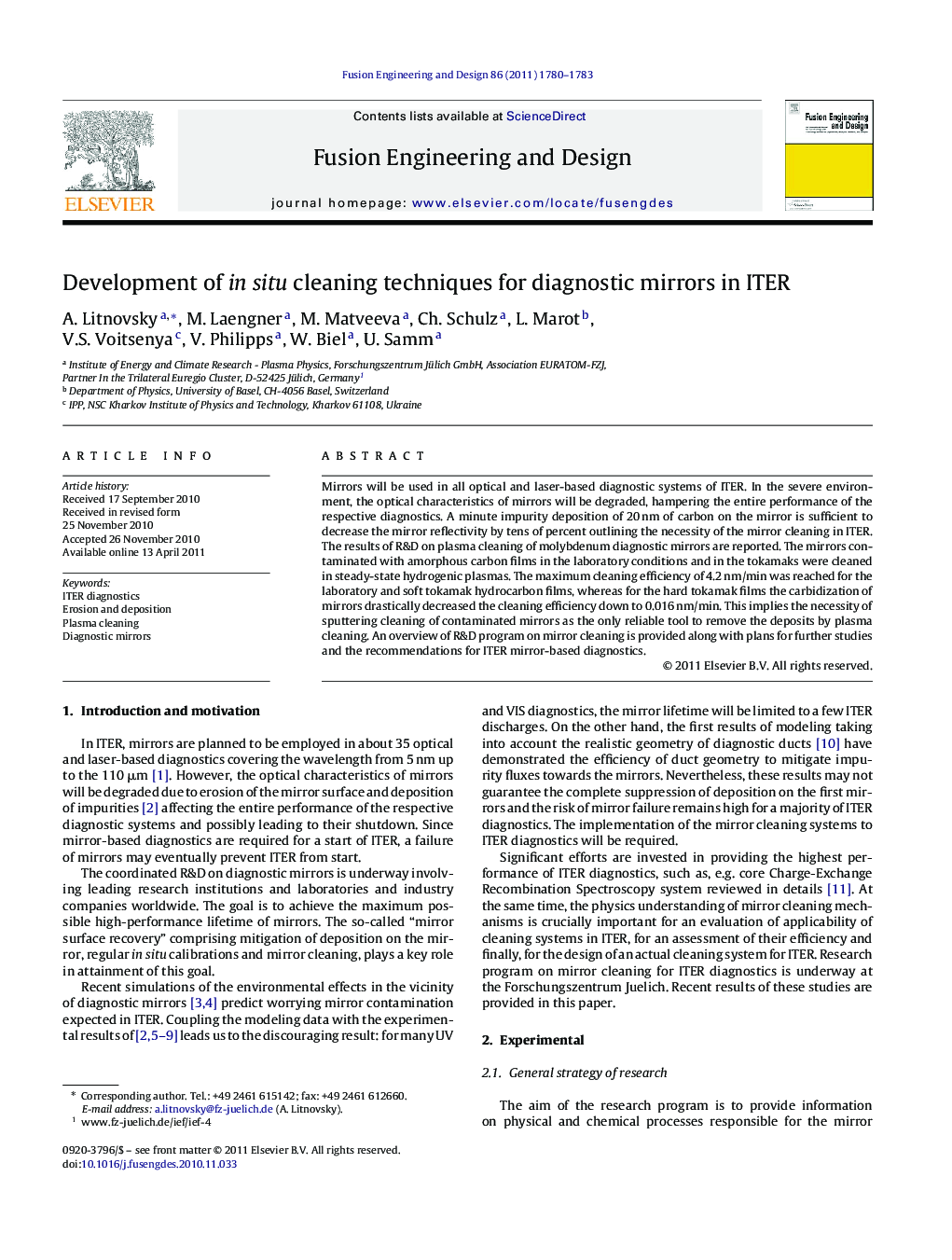| Article ID | Journal | Published Year | Pages | File Type |
|---|---|---|---|---|
| 271848 | Fusion Engineering and Design | 2011 | 4 Pages |
Mirrors will be used in all optical and laser-based diagnostic systems of ITER. In the severe environment, the optical characteristics of mirrors will be degraded, hampering the entire performance of the respective diagnostics. A minute impurity deposition of 20 nm of carbon on the mirror is sufficient to decrease the mirror reflectivity by tens of percent outlining the necessity of the mirror cleaning in ITER. The results of R&D on plasma cleaning of molybdenum diagnostic mirrors are reported. The mirrors contaminated with amorphous carbon films in the laboratory conditions and in the tokamaks were cleaned in steady-state hydrogenic plasmas. The maximum cleaning efficiency of 4.2 nm/min was reached for the laboratory and soft tokamak hydrocarbon films, whereas for the hard tokamak films the carbidization of mirrors drastically decreased the cleaning efficiency down to 0.016 nm/min. This implies the necessity of sputtering cleaning of contaminated mirrors as the only reliable tool to remove the deposits by plasma cleaning. An overview of R&D program on mirror cleaning is provided along with plans for further studies and the recommendations for ITER mirror-based diagnostics.
